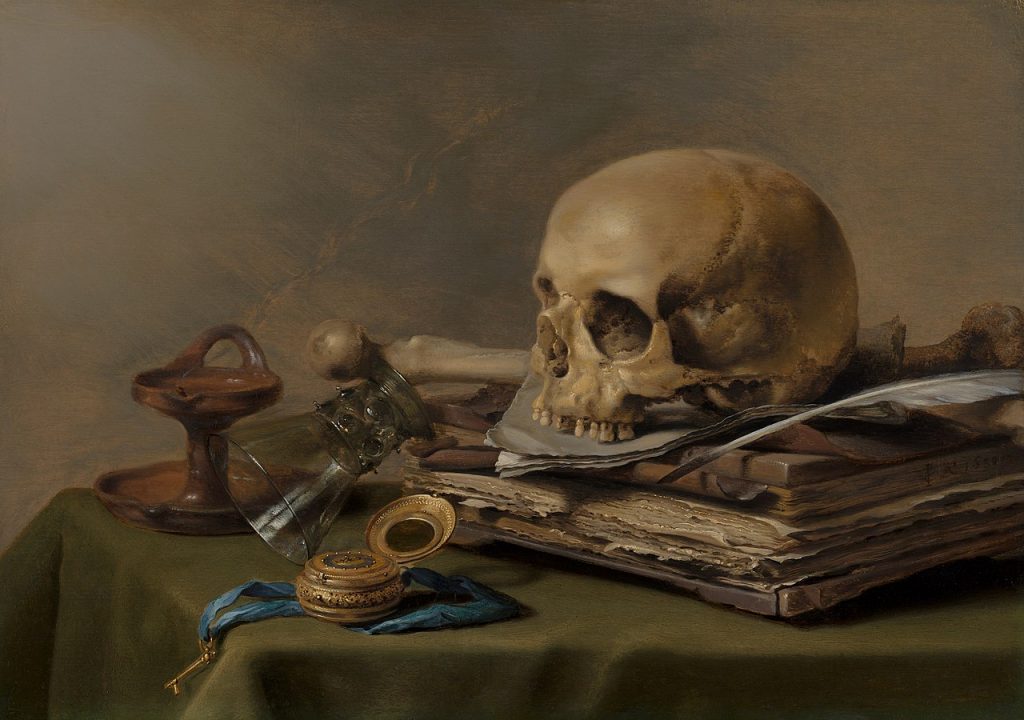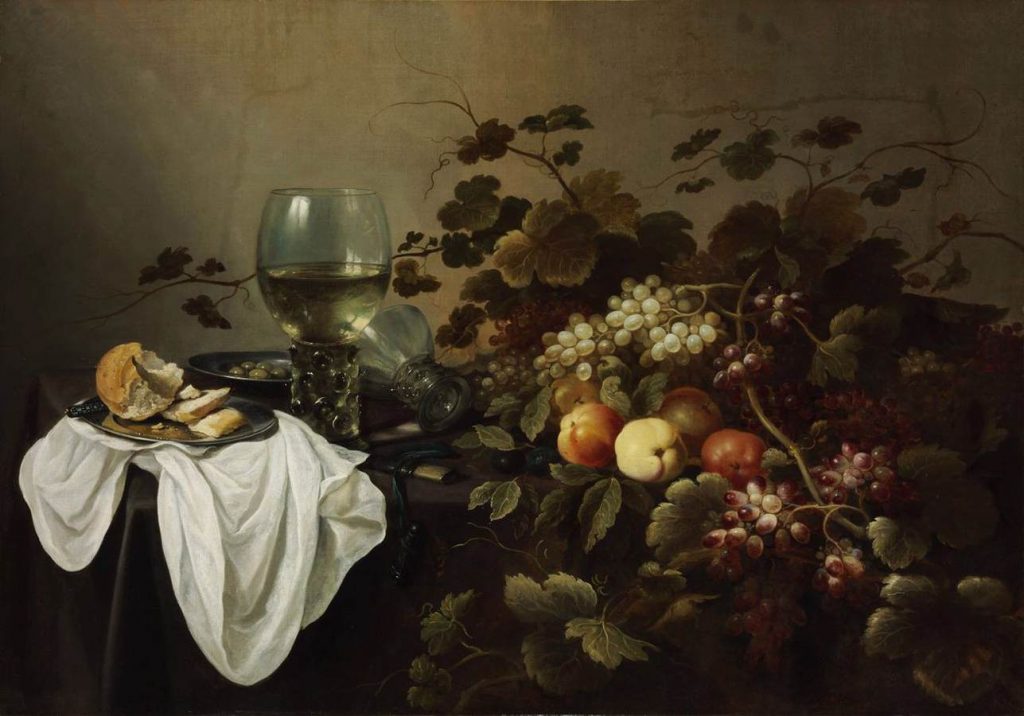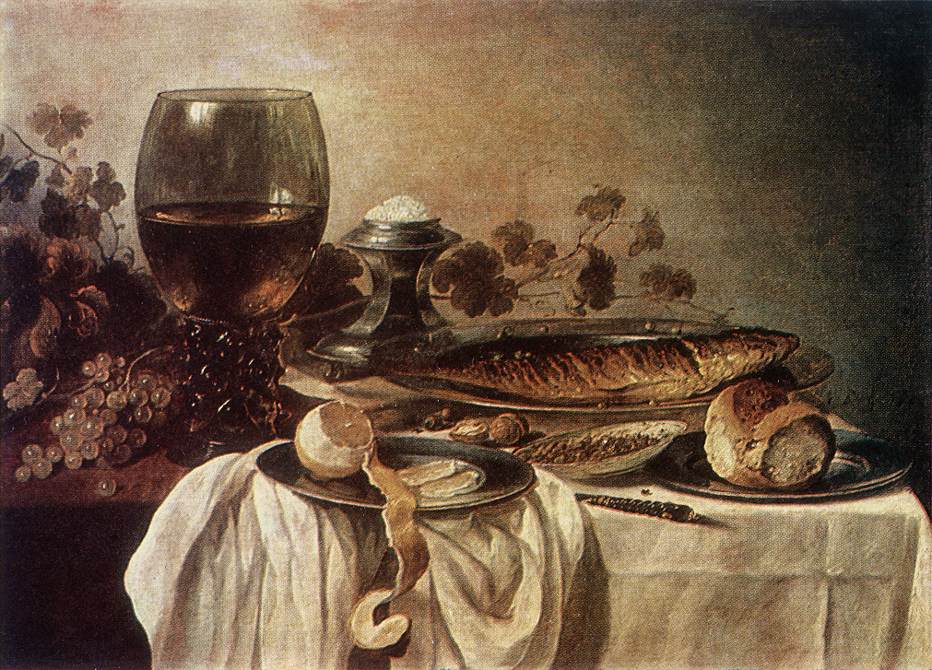Peter Claesz, also known as Peter Claesz of Harlem, was an extraordinary master of still life oil painting in the Baroque, Dutch Golden Age. He was known for his phenomenal technique that created a simple yet spectacular atmosphere in his works. Claesz’s “Still Life with a Skull and a Writing Quill” was a Vanitas Still Life that included several different objects symbolizing the mortality and worthlessness of earthly pleasure and goods.

Claesz was born in 1597, Burgsteinfurt, the bishopric of Münster [now Steinfurt, Germany], and in his early career was known to have monochromatic paintings with muted colors. However, his art style evolved to more Baroque work in 1647. Nevertheless, his talent enabled him to bring diversity to his paintings with the help of subtle nuances in his composition and careful selection of texture, values, and lighting.

Painted in 1644, “Still-Life with Fruit and Roemer” depicts a Roemer filled with wine with fruit beside it. The significance of this piece was that it was in collaboration with his friend, Roelof Koets, an artist known for his dramatic playful technique. This masterpiece is the only one in the world that was signed and dated by both artists.

This painting is called the “Breakfast Piece”, and is one of his more famous pieces due to its completely monochromatic colors. It features a simple meal set near the corner of a table. The image created a rich composition that looks calm and pleasing.
Claesz’s career was divided into three categories, each with a subtly different style. Until 1625, his paintings commonly only consisted of a table laid with silverware, food, and spices with crisp colors. He reduced the items on the table between the period of 1625-1640. After 1640, he increased the number of objects on the table and added a larger amount of different colors as well as luxurious objects.

Claesz’s “Still Life Turkey with Turkey Pie” features a mouth-watering banquet that almost looks surreal to the viewer’s eyes. Dated back to 1627, this piece is popularly known for the eye-catching reflections on the vase and glass.

Craesz’s “Still-Life with Crystal Ball” is another one of his Vanitas done in 1634. The painting features subtle colors and intense values that create a striking composition. This is personally my favorite piece because I can’t stop looking away from the subtle yet magnificent way the gold object stands out from the others. Although Craesz passed away in 1661, his son, Nicolaes Berchem, continued his family legacy in art becoming a famous landscape painter.
Citations:
https://www.britannica.com/biography/Nicolaes-Pietersz-Berchem
http://www.visual-arts-cork.com/old-masters/pieter-claesz.htm
October 25, 2021 at 4:22 pm
Caleb,
Excellent work on this lesser known artist from the Dutch Golden Age. I really appreciate it when students do a deeper dive into art history and come up with painters like this. Obviously you were moved by the work in question as it comes out in your writing. Good information and personal thoughts about the pieces. Just what I’m looking for. I’ve given you a 2/2 for your first two posts. Well Done!
Jeff